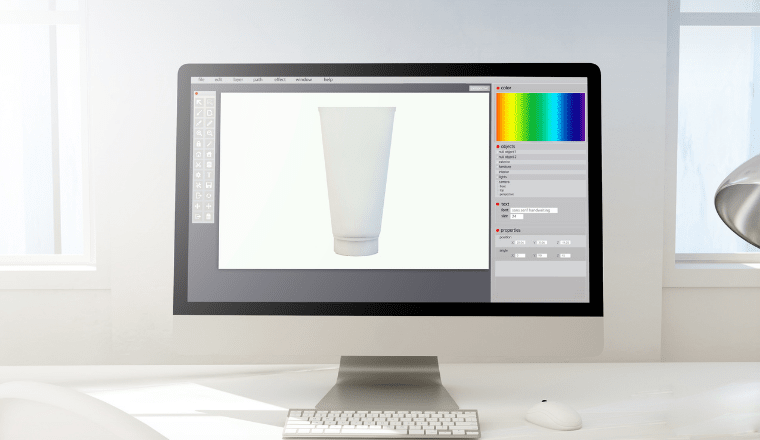Product design is a growing niche in the Middle East, this growth has been fueled by important events like Design Week in Dubai. Prior to this, the design industry in the Middle East traditionally lacked design-driven innovation. For instance, designers used outdated systems in production, with ideas and focal points set up around two-dimensional sketches. Similarly, designers used Eurocentric methods that did not reflect the region in both design and material. At the same time, the lack of intellectual property protection (IPP) further inhibited design innovation.
However, start-ups and small-to-medium enterprises (SME) have brought disruption to product design in the region. Smaller and more agile innovators are using cutting-edge technology such as 3D printing for design, and rapid prototyping to advance product design from mere visualizations to tangible prototypes. These prototypes can then be put on websites like Kick-Starter to track, forecast, and predict sales. The meteoric rise of start-ups and SMEs also shed more light on their founding members, their methods, and their promising designs. Sites like Twitter, YouTube, and TikTok make it easier for trending designs to go viral within a short space of time.
Similarly, with the rise of enforceable intellectual property laws in the Middle East creators feel increasingly confident to create. This is because intellectual property rights enable creators to derive financial benefit from their innovations and work. Without financial incentives, many product designers would not bother to go through endless design iterations. These iterations enable designers to perfect their ideas but the process can be time-consuming and costly.
As in other industries that use technology, there is a need for legal protection for design-related inventions and processes. Such innovations are products of human intellect just as much as other inventions. They require substantial research, inventive effort, and investment in sophisticated science. The benefits of IP not only lie in the interests of inventors and their employers, but also in the public interest. As a result, this promotes technological advancements in the design industry.
Notable product designers need to patent and protect their goods and intellectual property.
Product Design vs. Industrial Design
Product design and Industrial design are closely related terms that have been the subject of much debate. However, the following definition seeks to better clarify the terms.
“Product design is sometimes confused with (and certainly overlaps with) industrial design and has recently become a broad term inclusive of service, software, and physical product design. Industrial design is concerned with bringing artistic form and usability, usually associated with craft design and ergonomics, together in order to mass-produce goods.” (Morris 2009)
Beyond that, product design can be defined as the process of "imagining, creating, and iterating products that solve users’ problems or address specific needs in a given market." As such, product design is driven by user needs and the end-user experience. As such, product designers require both design skill and insight into customer habits, behaviors, and wants to solve real problems for real people.
Three Stages in the Design Process
Ideation
a) The ideation phase includes a design brief that clarifies all the crucial elements related to product design and the design idea.
b) Ideation also includes some initial sketches to illustrate the first iteration.
Acceleration
a) The design concept phase focuses on the elaboration of one or more suitable product design proposals. These proposals are expanded for a broader design system, according to the design objective. This phase also includes sketches, 3D rendering, and optional physical models.
b) Design development is the final 3D model of the design. Mainly, this consists of a 3D printable of the technical drawings as support for engineering and production. Also, this aids with the evaluation and correction of technical issues related to production.
Implementation
a) The implementation period is one of evaluation and finalizing for market launch. This phase adds to the possibility of retouching and/or the re-evaluation of the design. This can be done during the production period or implementation to market via customer feedback.
b) As an additional task, this phase allocates the development of promotional material, packaging, and marketing support for communication.
Notable Product Designers and their Designs
As previously mentioned, the Middle East is a thriving hub for design innovation. In fact, some of the most notable designers of this generation call the Middle East home. Also, with the region taking measures to aid and safeguard creativity it is no wonder. Here are some of the notable product designers from the Middle East.
Layth Mahdi Al-Attar
A tech-heavy futurist, embracing cutting-edge robotic fabrication. Al-Attar is also an award-winning architect. His advanced robotic fabrication earned him a research fellowship with the University of Michigan in Stone robotic fabrication. This exact technique gave birth to his collection named Ripple. This features robotically-milled stone products, making a rare fusion of luxury marble stone varieties and robotic fabrication techniques. He cites the late Pritzker Prize-winning pioneer Zaha Hadid as his inspiration. Al-Attar also describes himself as an architect at the core, with a great love for product design and its rewarding, small scale, and fast-paced results.
Jumana Taha and Mentalla Said
After both attaining degrees in interior design, the duo worked in interior designing at Aedas for 7 years, before deciding to venture out on their own. The duo launched a furniture and design studio called Studio MUJU. The two also took part in the Tanween design program by Tashkeel, their work includes furniture, lights, rugs. Their notable work includes the Moza chair, Fattoum floor lamp, Hizz rocking chair, and the Baskota table. Innovations include furniture that utilizes the Khoos (palm weaving) in delicate furniture combined with luxurious metals and timber.
Younes Duret
Younes was trained at the prestigious school ENSCI-Les Ateliers of Paris as an Industrial Design Engineer. His Zelli Library bookshelf has won many design awards and has been exhibited numerous times. His bildi teapot is showcased at the permanent collection of Islamic art at the Victoria and Albert Museum in London. Also, Younes has worked with well-known names like Sergio Rossi, Lomar, Med Club, Mafoder, Holmarcom, and Nokia. Younes also has a collection of 3D printed objects called JIDHR which bring together vases and luminaries. Of note, Younes has also collaborated with luxury brand Yves Saint Laurent.
Laila Al-Yousuf
An industry veteran, Laila earned her name working at Perkins+Will. Her work has received rave reviews, with collaborations with fortune 500 companies such as Google, Adidas, Ford, and IBM. Laila finally realized every designer’s dream and started her own design firm. Laila Al-Yousuf launched Say Studio, with partner Matthew Sexton in 2008. With Laila as Design Director and partner, she led the team to design notable products for PWC, Natixis, and Facebook.


Abdalla Almulla
Founder of the firm Mula, Abdalla gained recognition after his installation for the Gafla Jewellery brand at the 2007 Design Week in Dubai. His works have also been showcased at the London Design Festival, Paris Design Week, and Milan Design. This year Abdalla’s work has been part of the Zayed Gandhi Digital Museum. He is also currently designing public benches for the Al-Safa Arts and Design Library. Abdalla’s notable designs include intrinsic flux wall-coverings, the Mese range of bowls and vases, Shake’l range of modular benches, and the WOV collection of tables.
Zeina Abou Chaaban
In 2019, Zeina visited refugee camps in Lebanon as an opportunity to interact with and empower women in poverty. The resultant luxury handbags are made in Italian workshops and then decorated with unique and exclusive handmade embroidery. This results in one-of-a-kind pieces with a far-reaching social impact. Also, her pale style garments have been showcased at the British Museum of London and have received accolades from MIT and Harvard for their efforts in women empowerment.
Aljoud Lootah
Based at Aljoud Lootah Design Studio, Aljoud prefers very specific raw materials with unique properties. This is because their varying properties are vital in prototyping and determining the base and final design of her products. Among her notable designs are the Khous sofa and the Takya stool. To pay homage to the Emirati heritage she also handcrafted the Mandoos storage box collection. Her Alareesh collection, which references palm fronds, was exhibited during Dubai Week in 2018.
Ammar Kalo
An award-winning architect and designer, Kalo received a Silver A’Design Award for his chair, Stratum, at the 2015 Milan Design Week. Due to this success, Stratum and N-bowl were sold to the Cooper-Hewitt Smithsonian Design Museum of New York in 2016. He is known for groundbreaking ideas that combine digital technology and traditional craft. As a result, he has blended traditional material processes with advanced digital fabrication methods.
Conclusion
Based on the growing number of notable product designers in the Middle East, it is clear that there is great untapped potential in the region. There is even more potential for designers to collaborate with SMEs, startups, and incubators to leverage the innovation hubs in the region. In fact, as the Middle East continues to establish itself as a technological hub, different governments are positioning themselves to attract investment and businesses.
As a result, it has never been easier to set up a business in the United Arab Emirates and the Middle East in general, with clearer and more inclusive IP protection as well. Also, the MENA region has no shortage of traditional raw materials as such, designers can use glass, wood, stone, and sand to make innovative products. Also, product designers are embracing the global approach to design while leveraging their Arabic culture and roots. This is resulting in cutting-edge designs that are not available anywhere else in the world. As such, the rise of product design in the Middle East is clearly in its infancy and is yet to reach its full potential.
As a result, the stacks have never been higher to foster safe innovation while gatekeeping against copycats and culture vultures. To this end, it is always important for designers to protect their product designs through copyrighting and trademarking. If you would like to learn more about product design protection or would like help in a related area, drop us a line at connect@abounaja.com to schedule a complimentary consultation.






